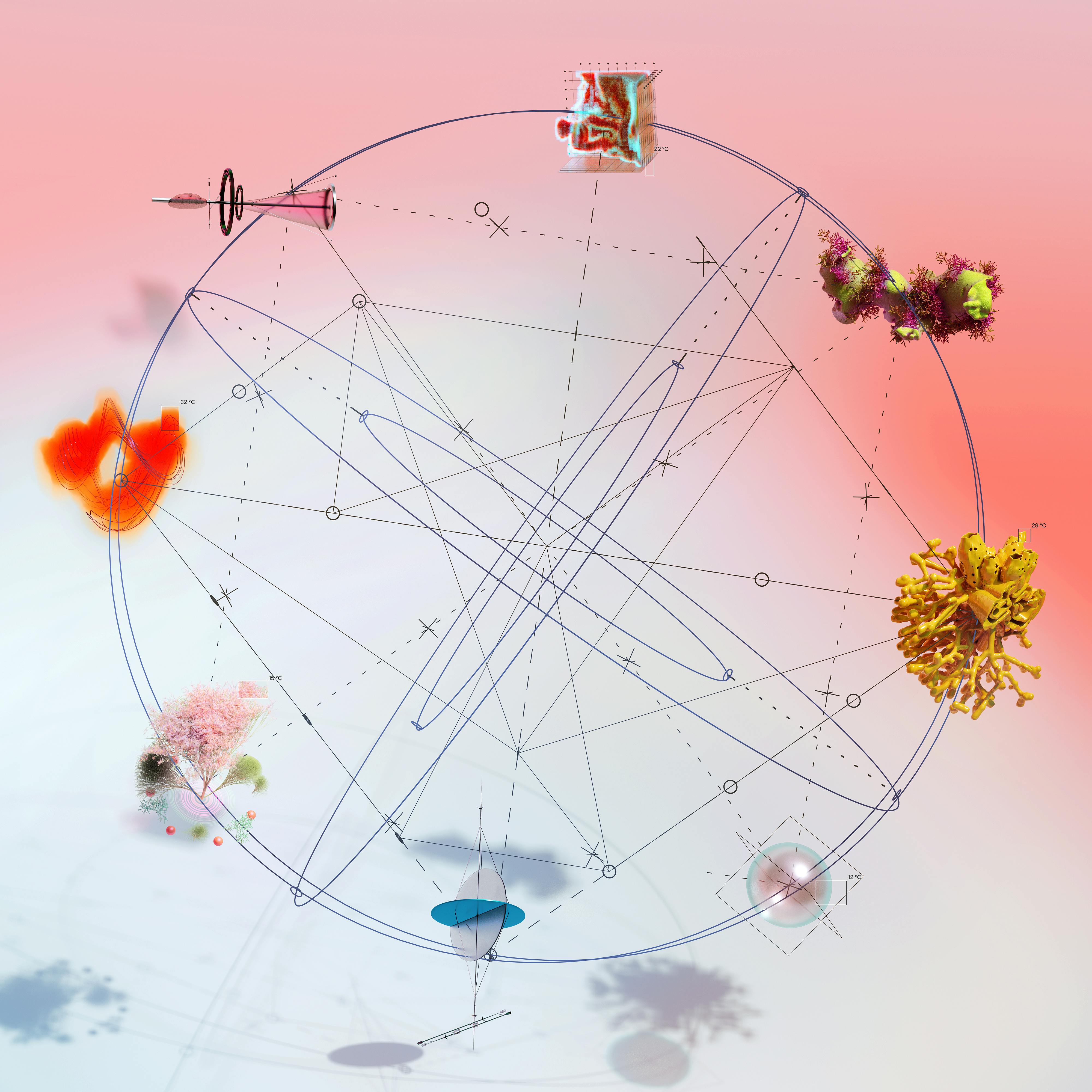Executive Summary
The “Bring Your Own AI” (BYOAI) trend – where employees independently adopt AI tools for work – is transforming agencies much as Bring Your Own Device did a decade ago. Today, ~75% of knowledge workers use AI on the job, and 78% of those users say they’re using their own AI tools, unsanctioned by IT.
In response, savvy agencies must embrace AI’s productivity gains while managing new risks. Studies show massive benefits: for example, one agency’s custom AI reporting tool cut manual report creation from 8 hours to under 1, and marketers using AI have seen campaign CTR jumps of 66–75%. Indeed, Forrester reports 60–78% of large US agencies already use generative AI for creative ideation and data analysis.
But BYOAI also brings data leaks, compliance gaps, model drift and runaway costs. Leading IT surveys warn that unsanctioned AI use threatens privacy and security. In short, agencies must race ahead on AI (to boost efficiency and creativity) while simultaneously governing it tightly. This article traces the BYOD→BYOAI arc, examines the drivers and ROI, surveys real-world cases (JPMorgan, Buzz Radar, etc.), and outlines governance frameworks (from whitelisting to “shadow audits”).
From BYOD to BYOAI: history and parallels
The BYOD era offers a blueprint. In 2009–2011, agencies (and all businesses) suddenly found employees bringing personal smartphones and tablets into work. CIOs scrambled to respond – initial bans soon gave way to official “BYOD programs” with mobile device management (MDM) and security policies.
Similarly, today’s employees are “quietly adopting” AI tools (like ChatGPT, Bard, Notion AI) on their own. Microsoft’s 2024 Work Trend Index confirms “use of generative AI has nearly doubled” and 75% of workers are already using it – often privately.
Early BYOD lessons apply. At first, many firms simply banned unknown devices, but that proved futile. Likewise, IT cannot effectively block all AI. Instead, organizations must “acknowledge, not prohibit” AI usage. And just as BYOD matured into formal policies and allowed-lists, BYOAI is evolving governance: companies are now defining approved AI toolkits (e.g. enterprise-grade LLMs and APIs) and usage guidelines.
Key takeaway: BYOAI is the new-normal extension of BYOD. Agencies should learn from that history by quickly formalizing AI policies and secure options, rather than ignoring this employee-led wave.
Drivers of BYOAI adoption in agencies
Agencies are under pressure to do more with less – shorter timelines, leaner teams, and exploding data volumes. AI offers relief.
- Time Savings & Creativity: 90% of users say AI helps them save time and 84% say it makes them more creative.
- Core Use Cases: Generative tools automate content drafts, brainstorm ideas, analyze data, and speed up coding or research.
- Widespread Uptake: Over 60% of agency leaders say their shop uses AI today (78% among large agencies). Common applications include:
- Ideating creative concepts (74%)
- Summarizing audience and campaign analytics (59–49%)
- Generating proposals and plans
- Ideating creative concepts (74%)
Part of this momentum is simple accessibility. Anyone can try free AI apps instantly (no procurement delay), so employees test tools on real problems. Three-quarters of AI users now opt for their own preferred tools, rather than waiting for IT. Younger staff lead the way (85% of Gen Z report using personal AI tools).
In practice: Employees are at the forefront of this revolution, using AI to work faster and smarter even if the company hasn’t provided a plan. Leaders see that AI can handle routine work, giving teams time for strategy and creativity. As OpenAI founder Sam Altman warned, AI will soon perform most tasks that marketers do today – so agencies must harness it proactively.
Examples:
- JPMorgan’s CTO reports that “prompting AI to write code” (“vibe coding”) freed developers to focus on higher-value problems.
- Agencies experiment with AI for customer insights, media optimization, personalized content, and legal review.
- By liberating staff from manual drudgery, AI tools can shave tens of hours a week from workloads.
Practical use cases and ROI
Reporting automation
Many agencies still laboriously compile client reports from multiple tools. One affiliate marketing agency cut this from 8 hours to under 1 by combining Power BI with GPT models. The system automatically pulls data, finds patterns, and writes narratives. As P2H Forge reports, manual report compilation, once an 8-hour task, was reduced to just 1–5 minutes of processing and under an hour total. This freed capacity lets teams handle more clients or deeper analysis.
Content creation & research
Copywriting and market research have long been ripe for AI. Marketers using ChatGPT and similar tools report huge time savings. A branding agency founder said AI cut a week of competitive research into minutes, saving 40–50 staff-hours. A small business owner found ChatGPT saved 40 hours and $7,500 in one month of everyday use.
Agencies also leverage AI to generate draft ads, social posts, image concepts, and A/B test scripts – allowing rapid iteration. In one case, an AI creative analytics platform helped an Indonesian fintech client lift ad CTR by ~75% by pinpointing the most resonant imagery and copy.
Data analysis & targeting
Agencies use AI-driven analytics to mine large datasets (social media, CRM, ad platforms). Buzz Radar built an IBM Watson–powered “Cognitive Command Center” to analyze social and campaign data in real time; it delivers instant insight into brand health and enables on-the-fly strategy adjustments. By optimizing ad spend mid-campaign, clients save millions in wasted budget. Other agencies train AI to segment audiences or predict outcomes, improving targeting and ROI.
Internal productivity
Beyond client work, firms use AI for operations: drafting emails, generating slide decks, summarizing meetings, and even automated coding. JPMorgan rolled out AI tools to 200,000 employees and saw “several hours a week” saved per user on low-value tasks. One AI pilot at Pepsi’s ad agency cut routine media-planning tasks by 50%, freeing analysts for strategic work. Even design tasks (background removal, template layouts) now benefit from AI assistance, boosting creative efficiency.
Tangible risks of BYOAI
However, BYOAI is not without peril.
- Uncontrolled data leakage
If employees plug proprietary client data into consumer AI platforms, that information may be stored or reused in model training. - Compliance & legal
In finance or health industries, unsanctioned AI use can violate GDPR, HIPAA, or company policies. One scenario: a designer uses a personal AI account for client work – if commercial use is forbidden under the license, the agency could face fines. - Security and shadow AI
Without IT oversight, “AI applications used independently by employees may not meet company security standards,” creating “shadow AI” holes in audit trails. - Model drift & accuracy
Generative AI can produce misinformation or biased content. Over time, even well-tuned models may “drift” as real-world conditions change. - Cost creep
Unlimited paid API or cloud GPU usage can explode budgets. Nearly 80% of companies report rising software costs, many blaming new AI features. Gartner estimates generative AI integration costs $5–20 million upfront. Agencies must guard against runaway cloud usage.
Case studies: real-world examples
Buzz Radar
A UK startup built a Watson-powered “Cognitive Command Center” to make sense of social data for brands. By delivering instant insights into consumers, influencers, and brand health, clients optimized campaigns in flight and reported multimillion-dollar savings.
JPMorgan Chase
JPMorgan went “all in” on AI, deploying a GenAI platform to 200,000+ employees with custom tools. Staff gained “several hours a week” of productivity by offloading routine tasks to AI.
Governance frameworks & tool approval strategies
To reap AI’s rewards without falling into its pitfalls, agencies need explicit policies and tools:
- Acknowledge and inventory
Survey teams to identify which AI tools they use. Catalog and classify them by risk. - Risk-based approval
Classify tools by data access risk. Block or replace high-risk apps with vetted alternatives. - Approved AI toolkit
Provide employees pre-vetted, enterprise-grade AI tools (e.g. ChatGPT Enterprise, Bard Enterprise). Secure inputs via internal APIs or wrappers. - Secure custom models
For in-house LLMs, ensure encryption, access control, and regular retraining to avoid drift. - User training
Educate staff on safe AI practices: never upload PII to casual tools, always review outputs. - Monitoring & audits
Implement IT monitoring for unauthorized AI use and periodically audit AI outputs for quality and compliance. - Cost controls
Track AI usage, set quotas, and negotiate enterprise licenses to prevent surprise bills.
By combining these strategies – formal policies, whitelisted tools, user education, and continuous monitoring – agencies can turn BYOAI from a rogue threat into a structured advantage.
P2H Forge’s role: enabling safe AI environements and workflows
Agencies don’t have to reinvent the wheel. Partners like P2H Forge specialize in integrating AI into agency workflows – securely and scalably.
- We’ve helped clients reduce an 8-hour reporting task to under an hour.
- We deploy custom LLMs on internal infrastructure.
- We build user-friendly GPT interfaces for content teams.
- Every integration includes governance: secure cloud accounts, data encryption, CRM integration, and controlled access.
This means agencies can offer AI-infused services (dynamic analytics, smart chatbots) without hiring AI developers. P2H Forge handles implementation, risk controls, and scaling – so your team focuses on strategy, not infrastructure.
Conclusion
BYOAI is no fad – it’s the next phase of digital transformation for agencies. Like BYOD before it, employees will continue bringing AI tools into their workflows, with or without official approval.
Agencies that ignore this trend risk falling behind or facing security and compliance fallout. The smart approach is to embrace AI’s productivity and creative advantages while instituting clear guardrails.
Agencies already using AI report major wins: faster delivery, deeper insights, higher engagement. The choice is stark: adopt AI thoughtfully or get left behind.
Development partners like P2H Forge can help turn AI from a shadow risk into a strategic asset – building secure, scalable, high-ROI solutions that protect both your margins and your reputation.


.png)


.png)
.png)
.png)
